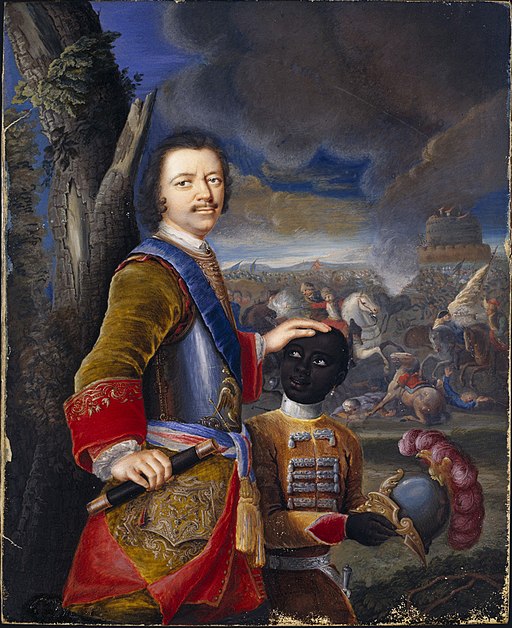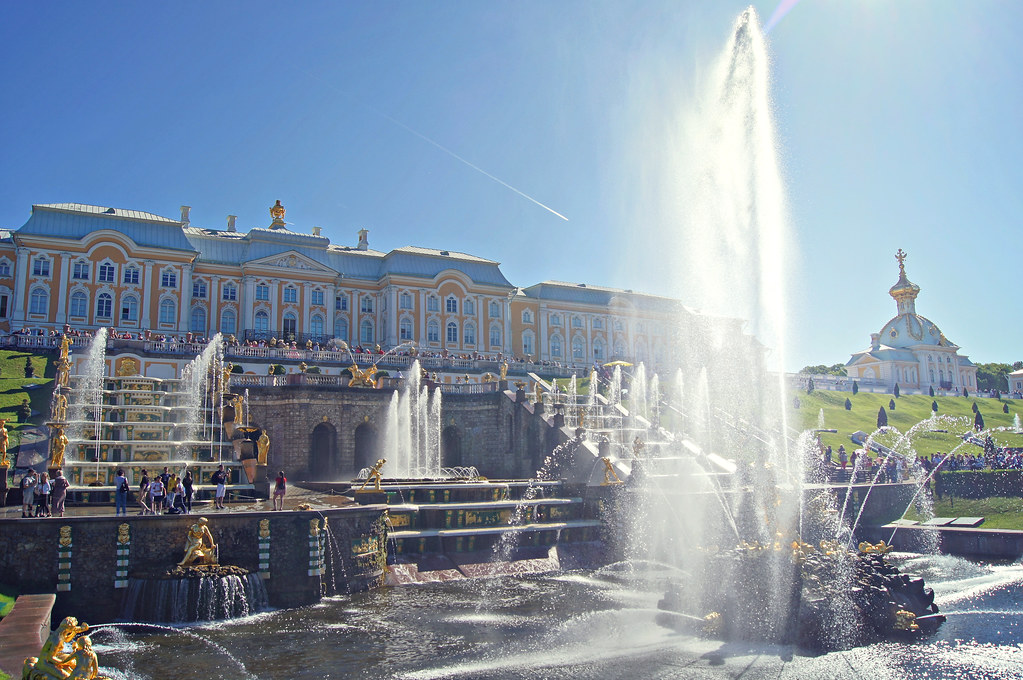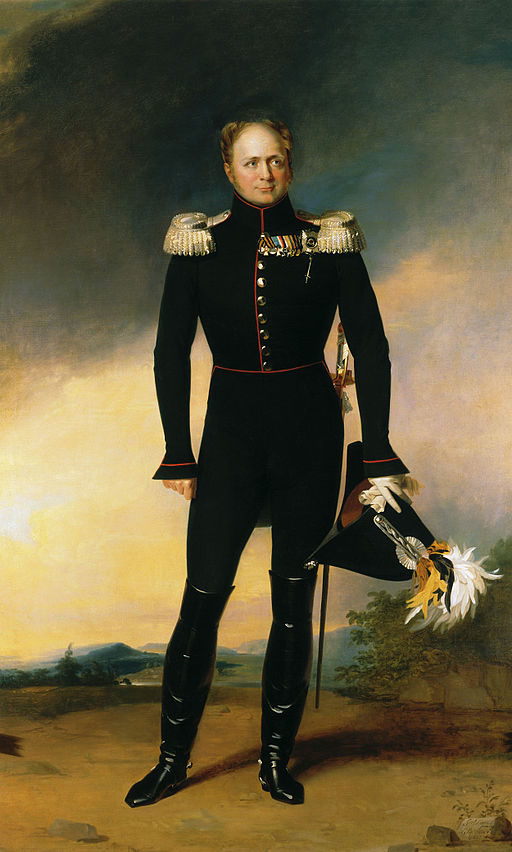

Tsar Peter the Great
Victoria and Albert Museum / Public domain https://upload.wikimedia.org/wikipedia/commons/9/94/Peter_the_Great%2C_Tsar_of_Russia.jpg
Peterhof Palace, St. Petersburg Russia.
“Peterhof Palace” by Javier Medina M. is licensed under CC BY-NC-SA 2.0
Alexander I of Russia by G.Dawe (1826, Peterhof). George Dawe / Public domain 
Sanssouci Palace, 1747, Georg Wenzeslaus von Knobelsdorff, Potsdam Germany. Photo by Tobias Nordhausen (CC BY 2.0) https://www.flickr.com/photos/93243867@N00/27196554478 
Frederick II of Prussia, Wilhelm Camphausen, 1870.
Wilhelm Camphausen / Public domain https://upload.wikimedia.org/wikipedia/commons/2/24/Friedrich_ii_campenhausen.jpg
- Yarn from bath used by Peter the Great, 59.8863° N, 29.9086° E, acquired in March of 1892.
- Satin from private dining room of Frederick the Great, 52.4042° N, 13.0385° E, acquired in 1892.
- Piece of a carriage belonging to Alexander I of Russia, 59.721°N 30.3926°E, acquired in March of 1892
These small items all once belonged of some of the most important rulers in the history of Eastern Europe and are taken from items and places used by the rulers in their daily lives, most likely Peterhof Palace in St. Petersburg, Russia. Reeve collected these items during a trip he made to Russia during the Great Famine of 1891-92 which devastated the rural population of Russia. He was appointed to a relief commission because he ran a grain mill in Minneapolis, Minnesota and oversaw a shipment of grain to the country. This famine is what ignited the wave of Russian populism at the turn of the century and eventually the creation of the communist Soviet Union.
Tsar Peter the Great was a major force in growing Russia into a world power. He ascended to the throne in 1682 at the age of 10. His mother acted as his regent, famously listening and giving the young Tsar direction from behind his throne. When he reached the age to rule by himself, he set out to modernize and westernize Russia. He built a new capital city, St. Petersburg after extensive travel through Europe. He also solidified Russia as a military power through multiple expansion campaigns.
Peterhof Palace in St. Petersburg, Russia was built by Peter the Great over many years in a style the imitated the great palaces of wester Europe, especially Versailles in France as part of his plan to bring Western European culture into Russia.
Frederick the Great was the King of Prussia from 1740 to 1786. As king he greatly expanded Prussia’s land borders and also annexed part of Poland. He reorganized the Prussian military and lead them to victory in the Seven Years War against France alongside Britain. This is just one of his many military achievements and he is considered on oof the greatest generals of the 18th century. He was also a patron of the arts and a proponent of the Enlightenment movement that was sweeping across Europe at the time of his reign.
Alexander I was the Tsar of the Russian Empire from 1801 to 1825. He is most known for his successful defeat of Napoleonic France. At the time of Alexander’s reign, Napoleon was amassing power in France and declared himself emperor with the goal of ruling over Europe. He is also known for forging an alliance with Britain and the expansion into Sweden, Poland and Turkey.
The carriage piece appears to no longer be in this canister.
Further Reading:
- Bushkovitch, Paul. 2001. Peter the Great. Lanham, MD: Rowman & Littlefield.Hodgetts, E. A.
- Brayley. In the Track of the Russian Famine: The Personal Narrative of Journey through the Famine Districts of Russia. T. Fisher Unwin, 1892. https://archive.org/details/intrackrussianf00hodggoog/page/n13/mode/2up
- Ziegler, Charles E. 1999. The History of Russia. Westport, Conn.: Greenwood Press.